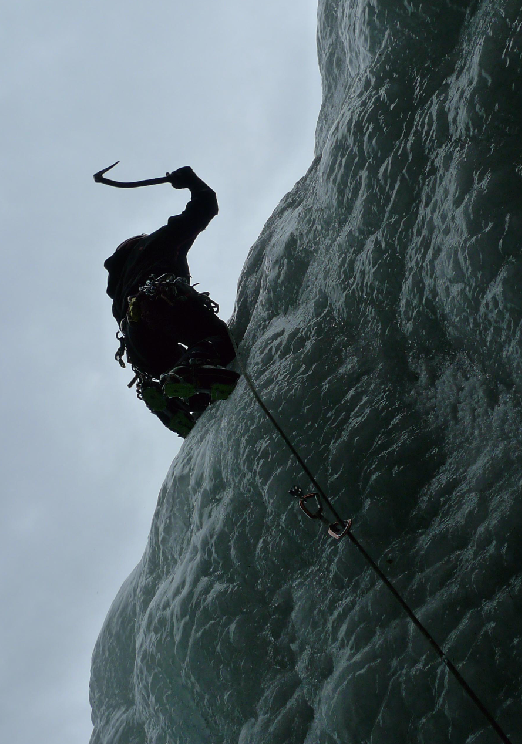
By Ben Gilmore
Before I write about integrity and how I think it relates to climbing, I’d like to clarify my views on the raging ethical debates common in the climbing world.
Integrity
1) being complete; wholeness
2) unimpaired condition; soundness
3) uprightness, honesty, and sincerity
I’m a strong believer in an essay written about twenty years ago by Yvon Chouinard, entitled simply “Coonyard Mouths Off, Part 2”. In his essay, Chouinard separates style from ethics, and he argues ethics are very important while style just doesn’t matter.
His definition of style describes the actions of climbers that don’t affect the rock and don’t affect other people, such as what they wear, whether they climb free or with aid, how fast or light they climb, or whether they use fixed ropes or not. These things only have an effect on the immediate climber’s experience, and they leave the mountain unchanged – unless, that is, they don’t remove their fixed ropes.
The example of leaving fixed ropes behind crosses the line into ethics, which Chouinard defines as actions that leave a mark on the mountain or have an effect on other people. Other examples of ethics are how climbers place fixed protection, how prepared they are for self-sufficiency, or how accurately they report their climb.
Much of the current debate in climbing makes the mistake of not separating style from ethics, and this leaves climbers arguing about stylistic differences.
I don’t care how fast people climb, whether they take a pack or a sleeping bag or not, if they pull on gear, or if they use fixed ropes. Judging climbers by their style just seems elitist and competitive to me, and I try to stay away from it.
I’m more concerned about things like bolts next to cracks, trash and gear jettisoned in order to go faster, rescues made necessary by incompetence or unpreparedness, and dishonesty or leaving out pertinent details when reporting climbs to others.
There are climbers out there with poor ethics, and I think it’s easy for them to shut out or disregard criticism about their ethics when people criticize their style in the same breath. There are also climbers who are sacrificing clean ethics in order to push the envelope in modern fast and light style.
The three definitions of integrity described above give a good framework for thinking about the word and how it relates to climbing and style and ethics.
1) Being complete; wholeness
Is a route finished at the top of the difficulties or at the summit? To me, summits matter and I don’t feel like I’ve finished an alpine route unless I get to the very top. I can still have a lot of fun and adventure on a climb when I don’t quite make it to the summit, but I have a greater sense of integrity about my effort if I actually stand on the top. Usually post-holing across that corniced summit ridge, when I’m exhausted at altitude, has been one of the hardest parts of my climbs.
2) Unimpaired condition; soundness
How prepared was I for the climb? Sometimes accidents just happen because climbing is a sport with inherent risk, but too often rescues are needed because people get in over their heads or don’t come to the climb with the right judgment, skills, or equipment. One of my personal goals is to train hard enough at Mountain Athlete to prevent my back from going out high on a climb.
3) Uprightness, honesty, and sincerity
Am I telling the truth about a route and how I climbed it, or am I sandbagging or leaving important details out of the story? I like to be completely honest and humble, rather than reporting in a way that is somehow designed to make me appear more strong or brave or competent than I really am. Most of all, I want my climbing achievements to speak for themselves.
I don’t claim perfection or complete integrity in my life as a climber.
My style of climbing is not always pure – I’ve used fixed lines, I chicken out and say, “take!” sometimes. I like to bring bivy gear on long alpine routes. But I don’t really care what anyone thinks about those things.
My ethics have been pretty clean but not always pure as well. Lapses in ethics are mistakes that lessen my feeling of integrity on particular routes. We all make mistakes and have to live with them, but its integrity that reminds us to learn from them.
About The Author, Ben Gilmore:
Expeditions to Alaska, Mt. Waddington (Canadian Rockies), India, Nepal, and Patagonia. First ascents in Alaska, New Hampshire, Patagonia, Nepal, Newfoundland, and Arizona. First ascent of Southeast Face of Moose’s Tooth, and “Common Knowledge” on Washburn Face of Denali, Alaska Range. Second ascents of “Czech Direct” on Denali, “Wall of Shadows” on Mt. Hunter, and “Snow Patrol” on Mt. Dickey. Nominated for the 2004 Piolet d’ Or Award for first ascent of Arctic Rage on Moose’s Tooth. First ascent, on Kangtega’s North Face in Nepal, October 2008. First ascent, on Mt Barille’s NE Face, May 2011. Exum Mountain Guide.
You Might Also Like The Alpinist Assessment
